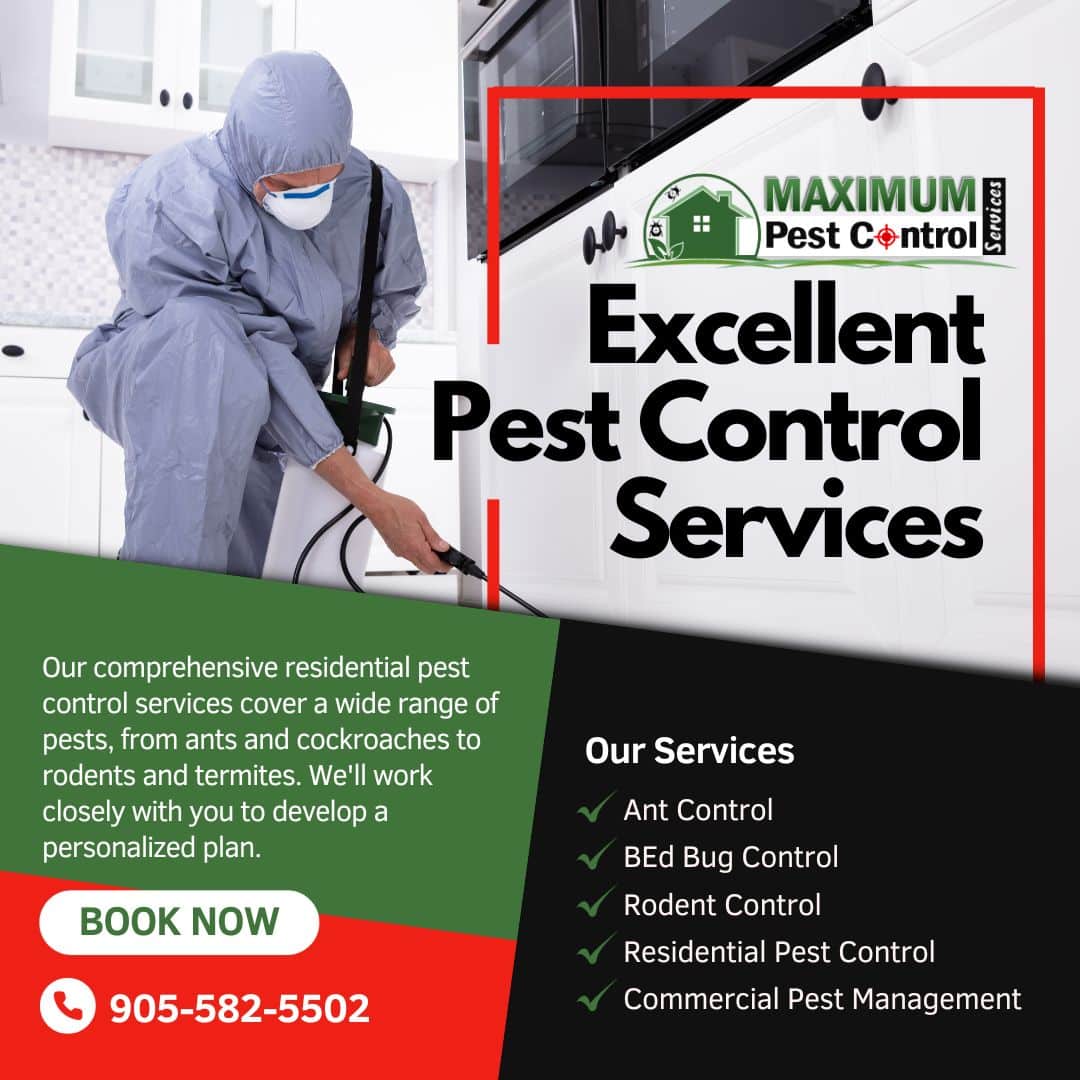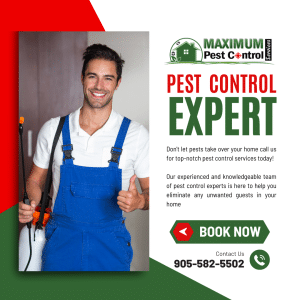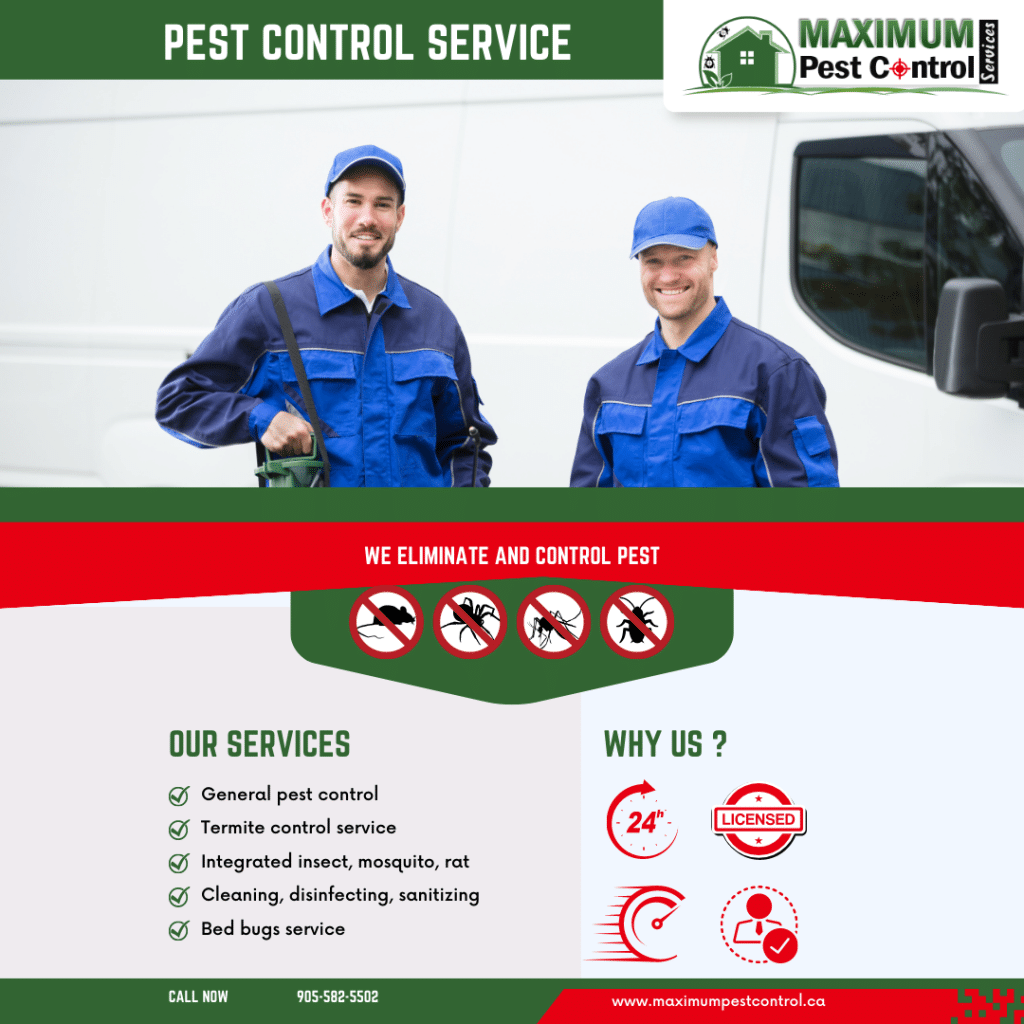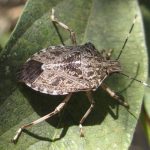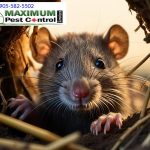
When should you consider fumigation?
Worried about a pest infestation? Our expert pest control services offer fumigation as an effective solution. Learn more about when and why you should consider fumigating for pest control. Protect your home with Maximum Pest Control Services!
Each year, USA and Canadian homes get invaded by pests like termites, cockroaches and rodents. These unwanted guests bring more than just a nuisance factor – they can spread disease, trigger allergies and cause costly property damage. When faced with a severe infestation, fumigation might be the best solution.
This pest control method involves filling an entire structure with a penetrating gaseous pesticide to suffocate insects, rodents and other critters. It’s an extreme measure, but sometimes necessary for eliminating stubborn bugs like drywood termites burrowed deep inside walls or furniture.
Proper fumigation prepares the site, contains the poisonous gas for several days, then aerates the space before it’s inhabitable again. While disruptive and pricey, fumigating is often the only reliable way to get rid of a major infestation completely.
Distinguishing Between Residential and Commercial Pest Infestations
While both homes and businesses can fall victim to pest problems, there are some key differences between residential and commercial infestations. For starters, commercial facilities like restaurants, warehouses, and offices tend to offer more food sources and warm, moist environments that attract insects and rodents. These pests can hitch rides on shipments of goods, hide in furniture or construction materials, and quickly establish thriving colonies.
However, commercial pest issues often get identified and addressed more quickly than residential ones. Most companies have regular inspections and preventative treatments to protect inventory, maintain sanitation standards, and avoid customer complaints or shutdowns. Homeowners, on the other hand, may not even realize they have a termite, rodent or bed bug infestation until significant damage occurs.
The scope and response to an infestation also differs for homes versus businesses. While sealing entry points and targeted insecticide application may resolve a minor residential issue, severe commercial infestations frequently require more aggressive baiting, fumigation or heat remediation treatments to fully eliminate pests from large facilities without extended closures or stock losses. Complex infestations call for customized integrated pest management plans.
Assessing the Necessity for Fumigation
Fumigation is an extremely effective but also intrusive and costly pest control method. It shouldn’t be the go-to solution for every infestation. Careful inspection and monitoring are required to determine if drastic measures are truly warranted. Factors that may necessitate fumigation include the extent and location of the pest population, the types of pests involved, and the inability to eliminate them through more targeted means.
For instance, fumigation could be the best option for severe dry wood termite infestations. These pests can quietly munch through floor joists, wall studs and other structural wood for years before being detected. Once they’ve spread throughout a building, localized treatment proves inadequate. The penetrating gaseous fumigants are often the only way to reach the colonies burrowed deep inside and across materials. For pervasive problems like this, contained fumigation followed by structural repairs provides the most thorough remedy, albeit a disruptive one.
If spot treatments, baits, and sealing entry points aren’t eradicating the infestation, the pervasive nature of dry wood termites or bed bugs may call for the whole structure to be tented and gassed. Proper fumigation is also wise after major rodent infestations to kill any remaining creatures and pathogens they tracked through the home or business.
Different Methods of Fumigation
Fumigation is a pest management strategy involving misting an area with air gaseous pesticides to suffocate or harm the targeted pests. Different effective fumigation techniques suit various situations.
- Tent Fumigation: Large tarpaulin tents enclose the structure being treated. Fumigant gas releases inside the sealed tent. It is effective for whole homes/buildings.
- Gas Fumigation: Premises sealed; specialized fumigant gases released throughout. Penetrates cracks and crevices where insects hide. It is ideal for severe infestations.
- Fogging: Insecticide fogging creates a dense mist actively dispersed in an area. Quick treatment without needing to vacate premises. It suits minor pest problems.
Benefits of Engaging a Certified Fumigation Service
Try managing with pests can be a frustrating task mission. While self-contained methods may seem tempting, frequently they don’t work well. That’s where certified fumigation companies come in, offering professional expertise and effective solutions.
- Thorough inspection and identification of pests by trained professionals. Exactly know what to do.
- Access to powerful, targeted treatments not available to consumers. These are designed for safe and complete elimination.
- Comprehensive service covering every nook and cranny. No stone left unturned in ridding your space of unwanted guests.
- Adherence to strict regulations and safety protocols. Most important is our health is the top safety priority.
- Long-term prevention strategies to stop re-infestation before it starts. Their work doesn’t stop after the initial treatment.
- Hiring the professional – peace of mind, a job done right the first time. No more worrying or dealing with recurring issues.
- Convenient, efficient service that fits your schedule around.
Types of Pests Requiring Fumigation
Termites are little but formidable that can cause serious damage on homes. Their insatiable appetite for wood makes fumigation essential. Drywood and subterranean termites both require fumigation’s powerful penetration. Don’t let their size fool you – these ravenous insects inflict costly damage.
Bed bugs are another unwelcome house guest requiring fumigation’s whole-home treatment. These resilient pests resist typical extermination methods. Only fumigation’s gaseous dispersion reaches their deep hiding spots. Bed bug bites leave irritating welts – you’ll want these vampires vanquished fast.
Fumigation may seem extreme, but some pests simply can’t be controlled otherwise. Wood beetles relentlessly burrow through woods and structures. Fickle dry wood termites evade treatments. When dealing with entrenched, pervasive infestations, fumigation’s comprehensive reach provides unmatched elimination. Trust the proven power of this targeted toxicity.
Preparation for Fumigation
Fumigation is an effective pest control method, but proper preparation is crucial for success. Whether tackling residential or commercial spaces, taking the right steps ensures optimal results. This guide offers a comprehensive overview to help prepare your area for fumigation.
Residential Fumigation
- Remove all plants, food, drugs and pet products from the space
- Double bag or remove mattresses and clothing from the premises
- Shut off utilities’ electricity, water, gas
- Seal off vents, chimneys and other openings with appropriate materials
- Vacate the premises for the duration of fumigation and airing out
Commercial Pest Control
- Identify sites/areas that require fumigation treatment
- Develop site preparation plans with the property owners/managers
- Remove equipment, furniture and combustibles as required
- Install vapor barriers and seal off openings properly
- Notify staff and surrounding areas about scheduled fumigation
- Vacate premises until cleared for re-entry by professionals
The Fumigation Procedure
Fumigating your space requires proper understanding and preparation. Hiring a certified company specializing in effective fumigation methods ensures successful treatment. Before proceeding, it’s wise to grasp what lies ahead – the steps involved before, during, and after fumigation. With the right approach, you can navigate this procedure smoothly.
Steps Involved in the Fumigation Process
Fumigation uses gaseous pesticides to suffocate or poison insects and other pests. It’s an effective way to eliminate infestations in buildings, vehicles, or grain storage facilities. The process involves:
- Preparing the area by sealing potential gas escape routes
- Calculating the dosage of fumigant based on the cubic volume
- Introducing the fumigant gas and allowing it to permeate the space
- Monitoring gas concentrations during the exposure period
- Airing out the area thoroughly once the fumigation is complete
- Inspecting for any surviving pests and retreating if needed
What to Expect After Fumigation
Fumigation is an effective way to eliminate pests, but there are some important things to expect afterwards. Here’s what you need to know:
- Lingering Odors – The fumigant used can leave behind a strong chemical smell that may last several days. Open windows to neutralize air out.
- Dead Pests – You’ll likely see dead insects around the home as the treatment does its job. Don’t touch them barehanded.
- Surface Residue – Preparators cover surfaces, but residue may remain. Wipe down counters and other areas before using.
- Air Out Home – Keep windows open as long as possible after re-entry. Run fans to circulate fresh air inside.
- Avoid Contamination – Discard any exposed foods or open containers. Wash all dishes/utensils before using again.
- Monitor Effectiveness – Check for signs of continued infestation over the next few weeks. Retreatment may be needed.
Conclusion
Fumigation becomes necessary when other pest control methods fail. Insects can infiltrate homes and buildings through cracks and crevices. If they multiply unchecked, an infestation arises requiring powerful fumigation treatment.
A professional will prepare the space by sealing it off. Toxic fumigant gas gets released to penetrate every nook and cranny. After the requisite exposure time eliminates pests, the area gets ventilated. Residents can return once toxic gas levels drop to safe limits. While disruptive, fumigation provides unmatched pest eradication when dealing with stubborn infestations.
Get rid of unwanted pests with Maximum Pest Control Services. Our certified technicians provide pest control solutions for both residential and commercial properties. Contact us now to protect your home or business (905) 582-5502.

